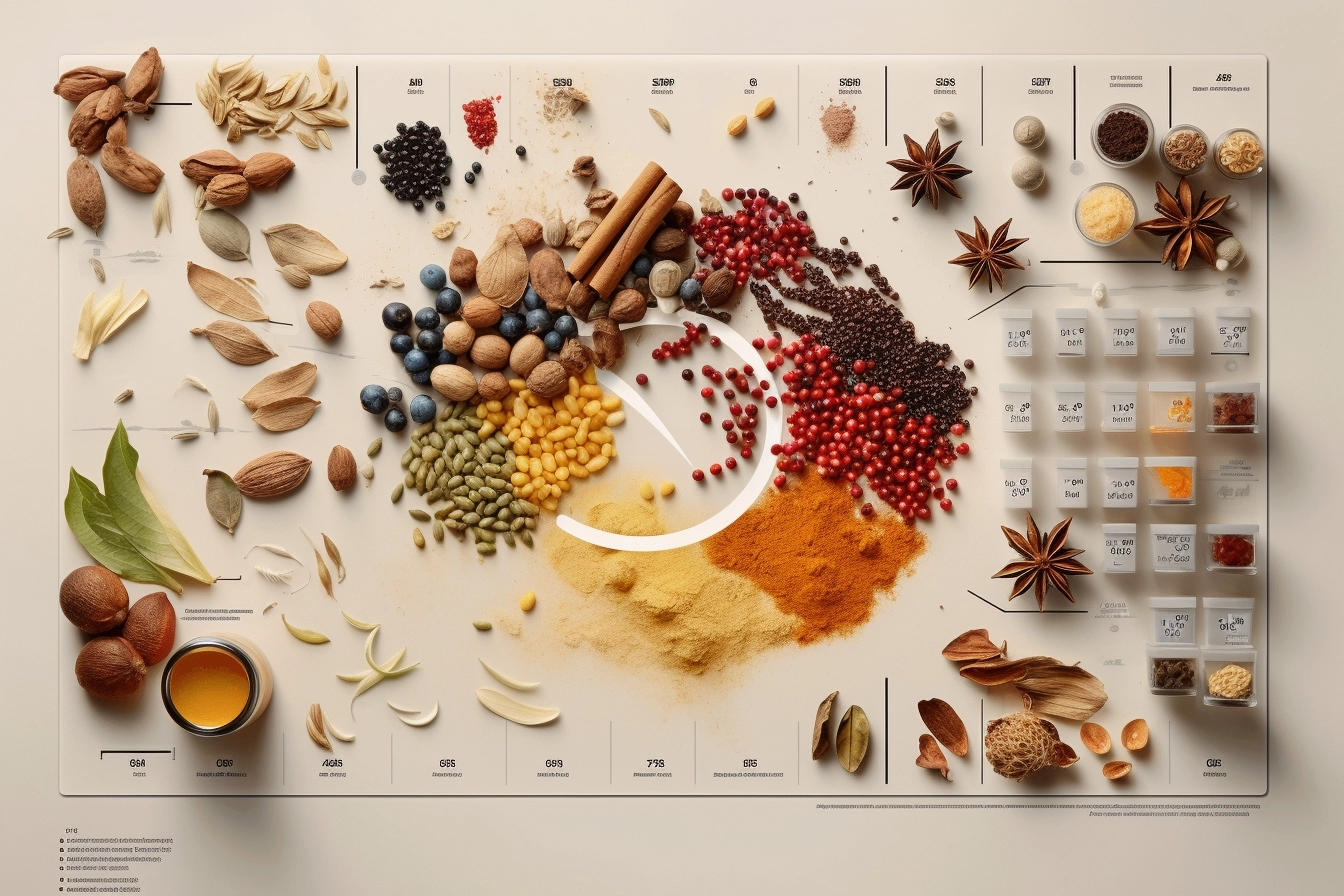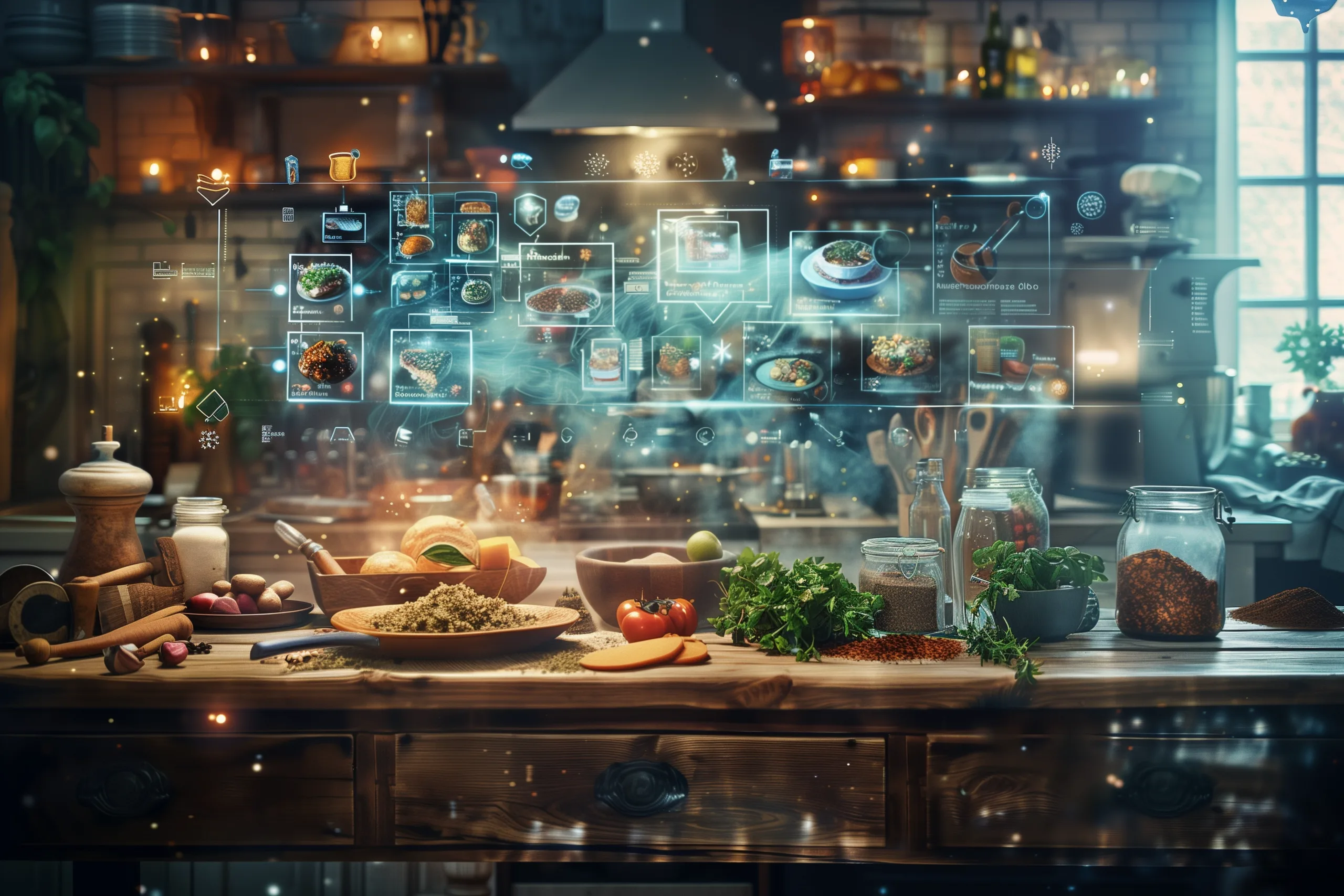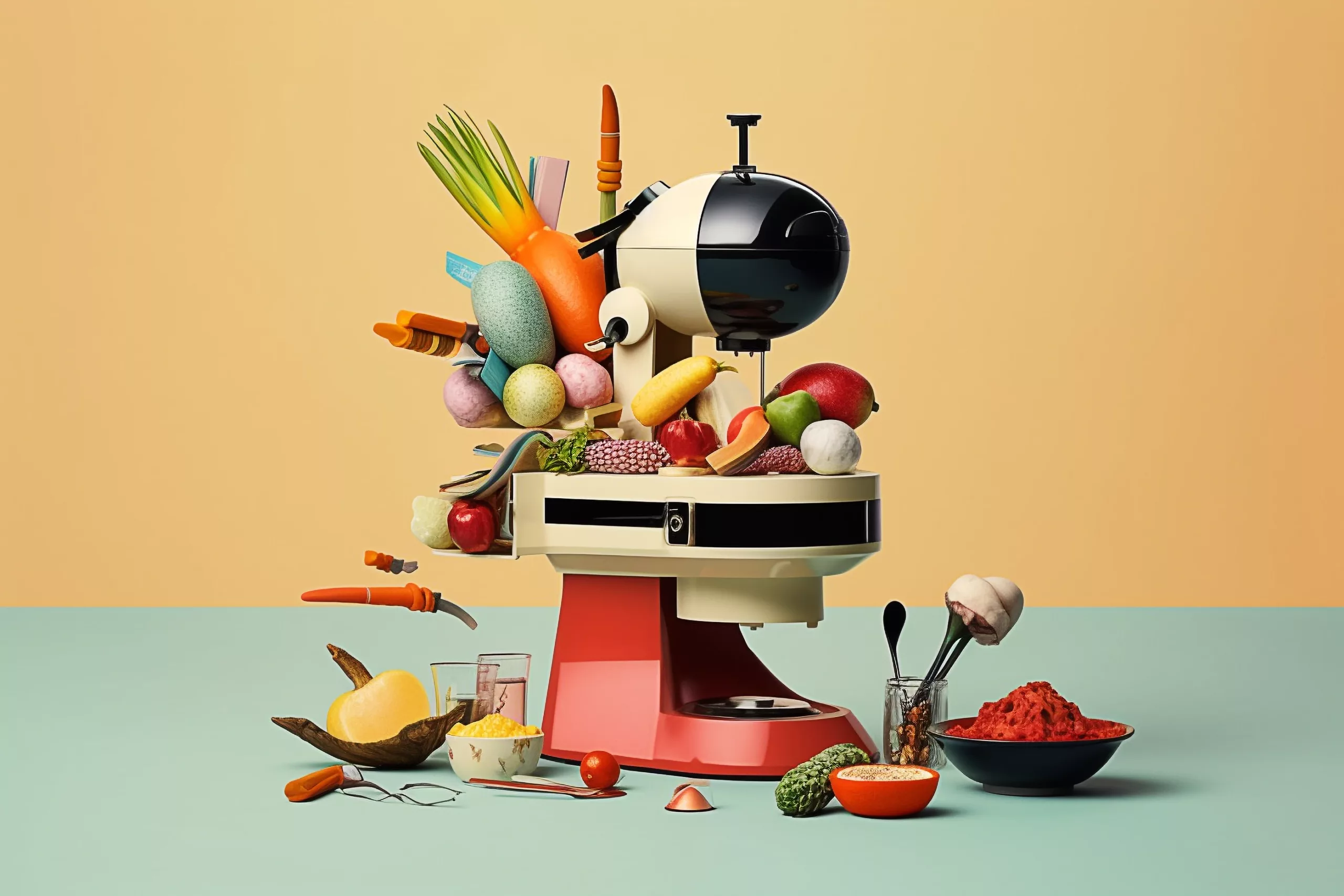published May 9th, 2023 | 8 min read
Have you ever wondered what makes a dish truly special and delicious? How do chefs and restaurant owners create unique dishes that will tantalize the taste buds of their customers? The answer lies in the science of flavor. By understanding the complexities of taste and smell, chefs can create culinary masterpieces that will leave customers coming back for more. This process has become even more refined through AI technology, allowing chefs to gain valuable insights into customer preferences and create dishes tailored to each individual’s palate. In this article, we will explore how AI technology is being used to revolutionize flavor science in fine dining and discuss the benefits of using AI in the food and beverage industries. With this information, my readers should be interested and fascinated to see how AI technology is changing their dining experience.

A chef in a kitchen with a computer screen displaying data analysis
What is Flavor Science?
Flavor science is a fascinating field of study that focuses on understanding how the human senses of taste and smell interact with food. It looks at the chemistry of flavor compounds and the psychology of how people perceive those compounds. For example, certain flavors such as sweetness or bitterness can be enhanced by adding certain ingredients, while other flavors such as sourness or saltiness can be suppressed. By understanding this interplay between taste and smell, chefs can experiment with different combinations of ingredients to create unique flavors and dishes.
In recent years, flavor science has been gaining traction in the world of gastronomy. This is because it helps to explain why certain foods taste better than others – something that is key for creating memorable dishes. In addition, flavor science has opened up new opportunities for chefs by allowing them to confidently explore various ingredient combinations.
AI technology is now being used to track user preferences and optimize ingredient combinations to further enhance this process. Through data analysis and machine learning algorithms, chefs can gain valuable insights into customer preferences and create dishes tailored to each individual’s palate. This technology can also help chefs anticipate customer responses before they even try a dish – enabling them to tweak recipes or adjust presentation styles accordingly. With these tools at their disposal, chefs have an unprecedented ability to craft unique flavors that will delight customers time and time again




A plate surrounded by flavor compounds and aroma molecules
How Does AI Technology Impact Flavor Science?
Flavor science is a fascinating field of study that focuses on understanding how the human senses of taste and smell interact with food. It looks at the chemistry of flavor compounds and the psychology of how people perceive those compounds. For example, adding certain ingredients can enhance certain flavors such as sweetness or bitterness, while other flavors such as sourness or saltiness can be suppressed. By understanding this interplay between taste and smell, chefs can experiment with different combinations of ingredients to create unique flavors and dishes.
In recent years, flavor science has been gaining traction in the world of gastronomy. This is because it helps explain why certain foods taste better than others – key for creating memorable dishes. In addition, flavor science has opened up new opportunities for chefs by allowing them to explore a variety of ingredient combinations with confidence.
To further enhance this process, AI technology is now being used to track user preferences and optimize ingredient combinations. Through data analysis and machine learning algorithms, chefs can gain valuable insights into customer preferences and create dishes tailored to each individual’s palate. This technology can also help chefs anticipate customer responses before they even try a dish – enabling them to tweak recipes or adjust presentation styles accordingly. With these tools at their disposal, chefs have an unprecedented ability to craft unique flavors that will delight customers time and time again.




A person interacting with a touchscreen tablet to customize their food order.
AI technology is transforming the field of flavor science by providing chefs and restaurant owners with a better understanding of their customer’s preferences. By tracking user behavior and preferences, AI-driven technologies can help optimize ingredient combinations to create unique flavors that will delight customers. Additionally, AI technology can be used to automate processes related to food production, such as predicting yields and optimizing ingredient combinations. This helps streamline the process of creating new products, reducing costs and time associated with product launches.
For example, AI algorithms can identify customer feedback in real-time and suggest menu items according to customers’ tastes. By using this data, restaurants can accurately predict customer responses before they even enter the door – giving them an advantage over competitors who lack this kind of insight. AI-powered tools also allow chefs and restaurant owners to craft dishes that are tailored specifically for each customer’s palate.
Furthermore, AI technology allows chefs to experiment with different flavors without the risk of wasting ingredients or money on unappealing dishes. By running experiments virtually on computers, chefs can gain insight into how different combinations of ingredients will interact with one another before ever putting them in the kitchen – making it easier for chefs to take risks in their cooking without fear of failure.




AI-powered systems used to track changes in customer preferences
Finally, AI-powered systems can be used to track changes in customer preferences over time and adjust menus accordingly to ensure they remain up-to-date with trends in flavor science. This allows restaurants to stay ahead of the curve when it comes to crafting dishes that will keep customers coming back for more – increasing profits along the way!
Overall, it is clear that AI technology has revolutionized flavor science by allowing chefs and restaurants to gain valuable insights into their customers’ preferences by tracking user behavior and optimizing ingredient combinations. With these insights at hand, restaurateurs can confidently create unique dishes that will keep patrons coming back again and again!
The Benefits of using AI Technology in Food and Beverage Industries
The food and beverage industry is undergoing a massive transformation as AI technology has become increasingly prevalent. With AI, restaurants, and chefs gain an invaluable understanding of their food product flavors and can create brand-new experiences for customers. AI technology breeds accuracy, efficiency, and consistency in the production of food while automating processes like ingredient selection, portion size, cooking time, and monitoring freshness and quality.
AI-driven analysis of customer data makes smarter menu pricing decisions and promotions for restaurant owners. Predictive analytics allows them to better anticipate customer tastes or trends than manual methods could ever achieve; this way they can swiftly react to changing market conditions or consumer demands. Moreover, AI tools let restauranteurs craft dishes tailored to individual customers or trial various flavors without wasting ingredients.




AI-powered robot in a restaurant kitchen
AI also helps restaurants become more intelligent by automating mundane tasks like inventory management or staff scheduling; it reduces employees’ need for manual work, which requires much effort but is prone to mistakes. Additionally, AI-powered chatbots enable restaurants to manage customer inquiries with minimal human interference.
In summary, many advantages come with employing AI technology in the food & beverage sector: improved product quality alongside cost management strategies that benefit restaurant owners equally as well as their clientele! By using these tools wisely, owners have the chance to develop unique dishes that captivate their customers while saving costs all at once, leading to a win-win situation!




Restaurant manager monitoring real-time data analysis
Examples of AI Technologies at Play in the Restaurant Industry
AI technologies are revolutionizing the restaurant industry, empowering restaurateurs to create delicious dishes tailored to individual customers. One example of AI at play is the use of algorithms to optimize menu items based on customer preferences. This helps chefs craft unique meals that customers will love while also allowing restaurants to experiment with new flavors without fear of wasting ingredients.
Chatbots are another form of AI technology used by many restaurants today. These intelligent bots can understand natural language and respond quickly and accurately to customer inquiries or orders in real-time, saving restaurants time and energy when it comes to handling customer service tasks. Additionally, chatbots can help customers select menu items based on their previous orders or provide answers about dietary restrictions or allergy information.
To further improve operational efficiency, AI-based tools such as automated scheduling systems take care of mundane tasks like assigning staff shifts or generating reports on sales data and performance metrics. Furthermore, predictive analytics can help restaurants anticipate order patterns and optimize inventory levels accordingly – reducing food waste along the way!
Finally, AI-driven analytics give restaurateurs a better understanding of consumer behavior so they can stay ahead of trends and adjust their menus accordingly. By tracking changes in tastes over time, restaurant owners can determine which dishes should stay on the menu or be taken off altogether – ensuring an enjoyable experience for every diner who visits their establishment!




AI robot arm pouring measured amounts of ingredients into a mixing bowl
The Future of Flavor Science and AI Technology
The advent of AI technology has opened up a world of possibilities for the food industry. From predicting consumer preferences to crafting personalized experiences, restaurants can now leverage AI-driven insights to craft delightful dishes tailored to individual customers. With more accurate sensors and instruments that measure flavor and taste, AI technology enables chefs and restaurateurs alike to identify even the most subtle nuances of flavor in fine dining.
AI technology can be used to conduct predictive analytics on customer data, allowing restaurants to design menus that appeal specifically to each customer segment. By using natural language processing (NLP) or deep learning algorithms, restaurant owners can process customer conversations and extract meaningful insights from them which can then be used to improve recipes or optimize menu items according to customer preferences – all resulting in improved product quality and cost management strategies that benefit both parties involved.




Dish with an unusual flavor combination created by AI
Moreover, automated processes such as ingredient optimization and menu pricing decisions have become possible with AI technologies – giving restaurants the ability to control costs while still providing their clientele with personalized experiences. In summary, flavor science is an ever-evolving field that has been revolutionized by advancements in AI technology – creating a bright future for culinary innovation in the world of fine dining!









